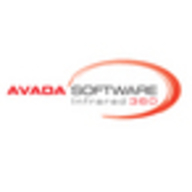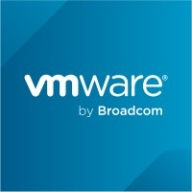

Avada Software Infrared360 and VMware Aria Operations for Applications are competing products in the IT operations space. Users are happier with Infrared360's pricing and support, however, VMware Aria Operations for Applications is considered superior due to its features and overall value.
Features: Avada Software Infrared360 is recognized for its comprehensive monitoring capabilities, ease of integration, and user-friendly interface. VMware Aria Operations for Applications is celebrated for its advanced analytics, scalability, and robust feature set, which users find cutting-edge.
Room for Improvement: Users suggest that Avada Software Infrared360 needs to enhance its alerting system, improve its documentation, and upgrade its user interface. VMware Aria Operations for Applications could benefit from optimizing resource usage, simplifying the configuration process, and reducing deployment complexity.
Ease of Deployment and Customer Service: Avada Software Infrared360 is often praised for its straightforward deployment process and highly responsive customer service. VMware Aria Operations for Applications, although more complex to deploy, is supported by extensive documentation and helpful customer support services.
Pricing and ROI: Avada Software Infrared360 is seen as cost-effective with a quick return on investment. VMware Aria Operations for Applications, though more expensive, is considered worth the investment due to its extensive capabilities. Users view Infrared360 as budget-friendly but acknowledge VMware's potential for higher returns.
| Product | Market Share (%) |
|---|---|
| VMware Aria Operations for Applications | 1.0% |
| Avada Software Infrared360 | 0.3% |
| Other | 98.7% |

| Company Size | Count |
|---|---|
| Small Business | 4 |
| Midsize Enterprise | 5 |
| Large Enterprise | 5 |
| Company Size | Count |
|---|---|
| Small Business | 4 |
| Midsize Enterprise | 1 |
| Large Enterprise | 10 |
Avada Software specializes in Enterprise Middleware solutions. Founded by some pioneers in SOA, MQ and J2EE technology, Avada’s Flagship product, Infrared360, is a holistic & innovative private cloud enabled portal providing self-service administration, monitoring, load testing, auditing & statistical reporting for Enterprise Middleware including IBM’s middleware stack of MQ, IIB (message broker), WAS, and Datapower, as well as other applications servers such as JBoss, TC Server, Weblogic, and other messaging technologies such as Tibco EMS and Kafka*.
Accessed via any web browser on any device, Infrared360 is a single web application, yet scales to 2500+ endpoints without deploying anything (no agents, no scripts) to those endpoints.
Using trusted ‘spaces’ and delegated visibility and control, the portal uniquely provides different business units or even different application users virtual ‘spaces’ in which to work. Within those spaces are only the objects and resources the user has been granted visibility. Role policy dictates permissions on those resources.
It is the ONLY Enterprise Messaging Solution with a built in SOA engine that lets you leverage internal and external services for managing and correcting problems within your middleware messaging environment.
*Kafka coming soon
VMware Tanzu Observability by Wavefront is a powerful tool for monitoring and analyzing the performance and availability of applications and infrastructure in real-time.
With its comprehensive monitoring capabilities, visualizing and analyzing data becomes effortless. The real-time alerting system ensures timely issue resolution, while scalability and a user-friendly interface provide a seamless experience for smooth operations.
We monitor all Application Performance Monitoring (APM) and Observability reviews to prevent fraudulent reviews and keep review quality high. We do not post reviews by company employees or direct competitors. We validate each review for authenticity via cross-reference with LinkedIn, and personal follow-up with the reviewer when necessary.